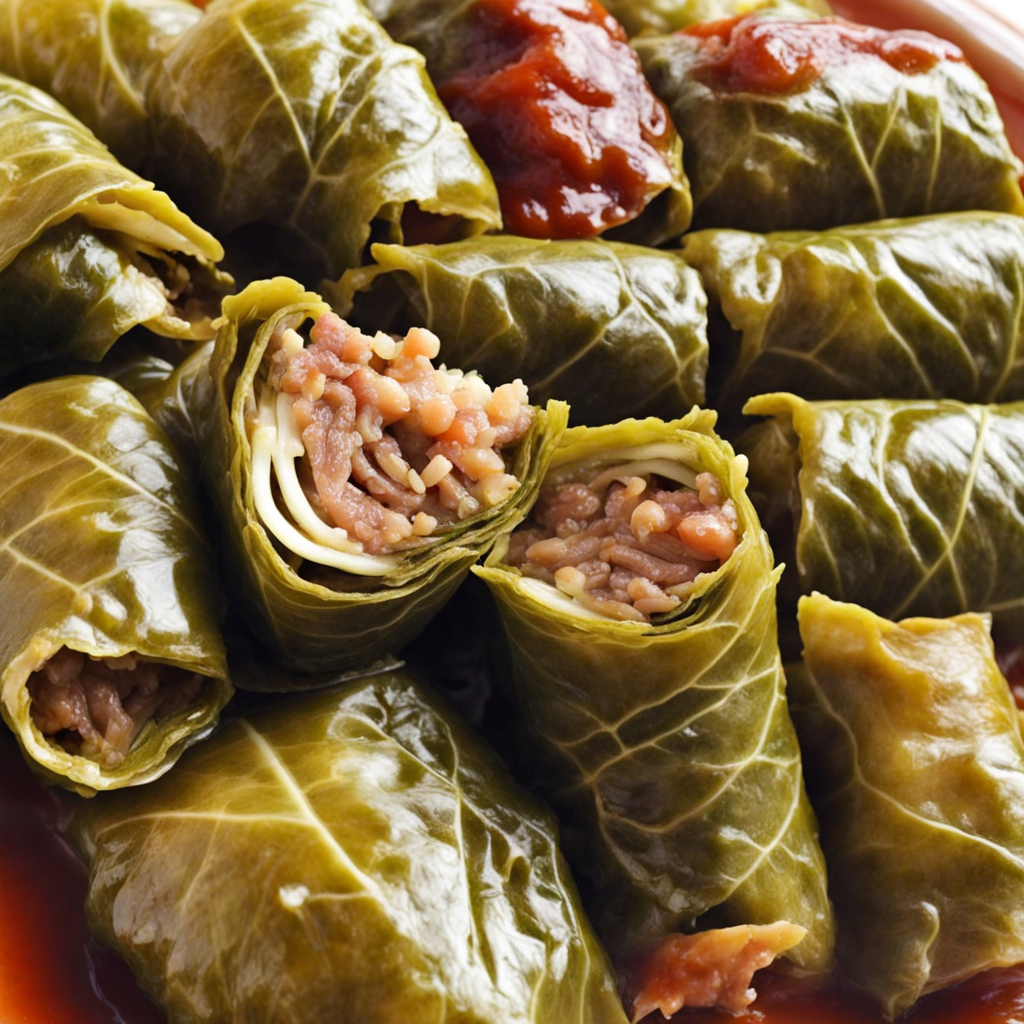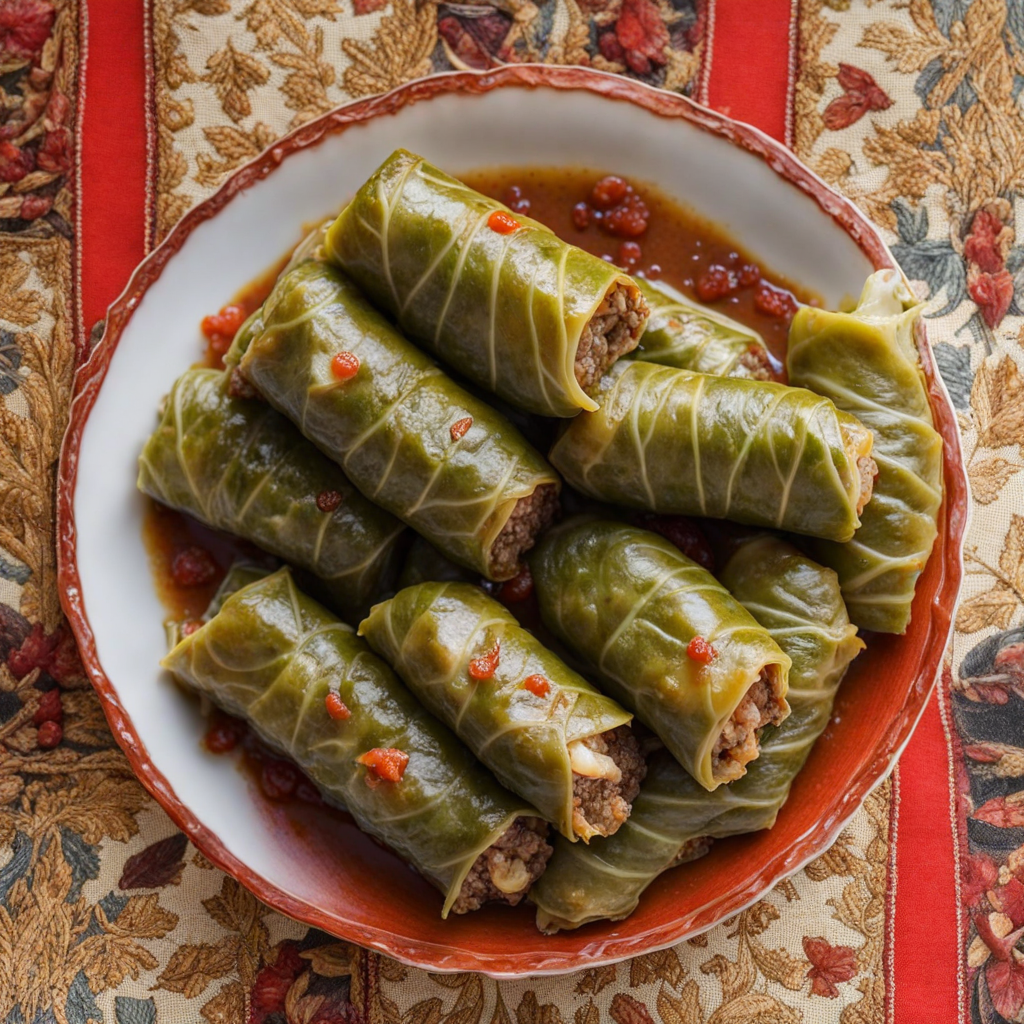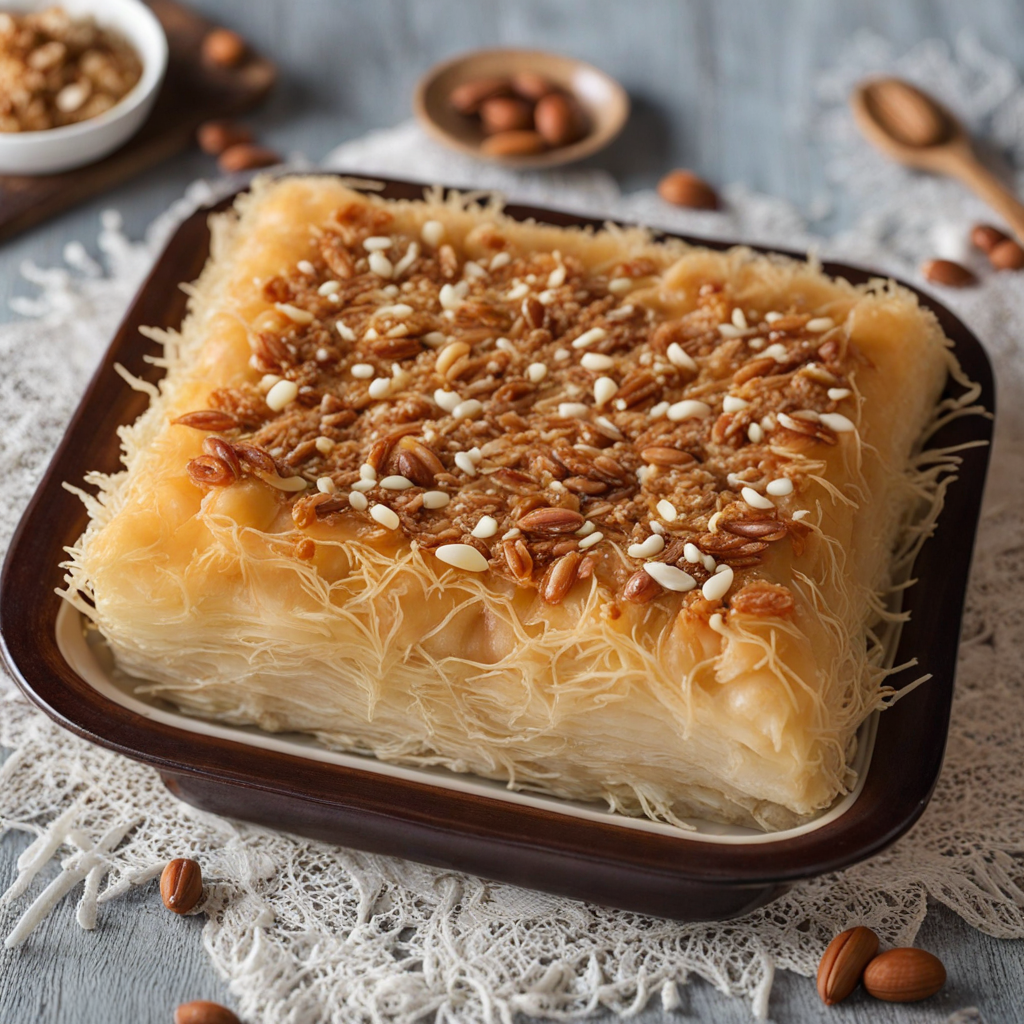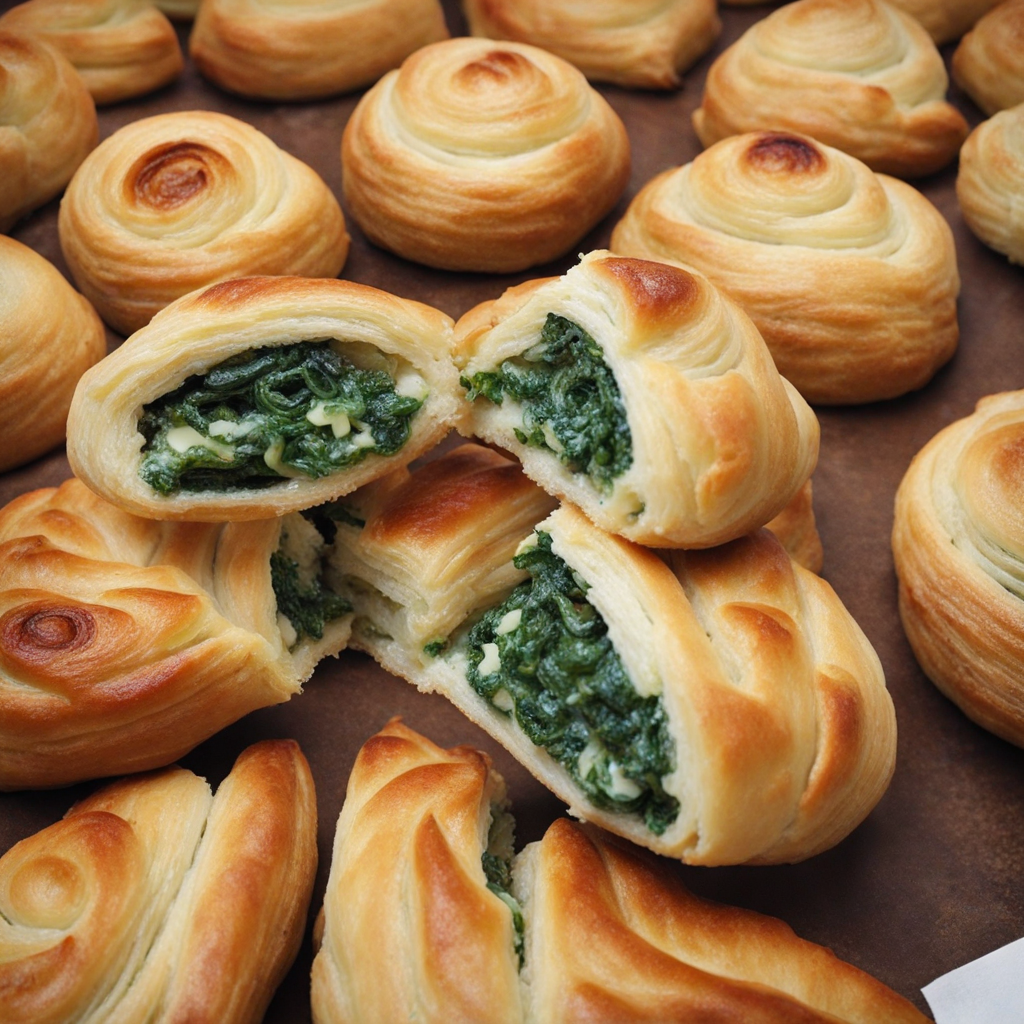Sarma
Sarma is a beloved dish from North Macedonia that captures the essence of the region's culinary traditions. This delightful meal consists of tender, savory rolls made from fermented cabbage leaves, which are generously filled with a mixture of minced meat, rice, and a medley of spices. The fermentation process gives the cabbage a unique tangy flavor that beautifully complements the rich filling. Each bite offers a harmonious blend of textures, with the soft cabbage enveloping the juicy, flavorful filling, creating a satisfying experience for the palate. What sets Sarma apart is not only its taste but also its preparation, which often involves communal cooking. Families gather to prepare large batches, especially during festive occasions or family gatherings. The rolls are typically simmered in a pot with a rich tomato sauce and sometimes smoked meats, which infuse the dish with additional depth and complexity. The slow cooking process allows the flavors to meld together, resulting in a comforting and hearty meal that warms the soul. Served with a side of crusty bread or a dollop of sour cream, Sarma invites you to explore the vibrant flavors of North Macedonian cuisine. It's a dish that embodies tradition, love, and the joy of sharing a meal with loved ones. Each region may have its own variations, making it a versatile dish that reflects local ingredients and culinary practices. For anyone seeking to expand their culinary horizons, Sarma offers a unique taste of North Macedonia that is sure to leave a lasting impression.
How It Became This Dish
The History of Сарма: A Culinary Tradition of North Macedonia Сарма, a beloved dish in North Macedonia, embodies the rich tapestry of Balkan culinary traditions. This dish, typically made from minced meat and rice, wrapped in fermented cabbage or vine leaves, has layers of history that reflect the region's complex cultural identities, agricultural practices, and social customs. #### Origins of Сарма The origins of сарма can be traced back to the Ottoman Empire, which spanned across Southeast Europe, Western Asia, and North Africa from the 14th to the early 20th century. The word "сарма" itself derives from the Turkish word "sarma," which means "wrapped." This linguistic connection underscores the dish's journey through different cultures and cuisines. Cabbage, a primary ingredient in сарма, has been cultivated for thousands of years and is a staple in many European diets. In the Balkans, the fermentation of cabbage—a method developed to preserve food during harsh winters—led to the creation of the beloved sour cabbage leaves used in the dish today. Vine leaves, on the other hand, reflect the Mediterranean influence on North Macedonian cuisine, showcasing the region's agricultural diversity. Initially, сарма was a dish enjoyed by the rural population, often prepared during the colder months when fresh produce was scarce. Families would make large quantities to sustain them through winter. The dish's hearty nature made it ideal for gatherings and celebrations, quickly embedding it into the cultural fabric of North Macedonian society. #### Cultural Significance In North Macedonia, сарма is more than just a meal; it is a symbol of hospitality, family bonding, and tradition. Its preparation often involves the entire family, with each member contributing to the process. This communal aspect reflects the broader social values of the region, where family ties and community gatherings are paramount. Sарма is traditionally served during significant celebrations, such as holidays, weddings, and family gatherings. For instance, during Christmas and New Year's, it is common to find сарма on the dining table, signifying abundance and prosperity for the coming year. It also plays a role in the feast of Saint George (Đurđevdan), a day that marks the arrival of spring and is celebrated with various traditional foods. Furthermore, сарма represents the blending of cultural influences in North Macedonia. The dish has variations across different ethnic groups in the country, including Macedonians, Albanians, and Turks. Each group adds its unique twist to the preparation, showcasing the diversity of North Macedonia's culinary landscape. For example, some might add spices like paprika or cumin, while others may include nuts or dried fruits for added flavor. #### Evolution Over Time As North Macedonia transitioned from Ottoman rule to the modern nation-state, the culinary landscape began to shift. The influence of globalization and migration patterns has led to new interpretations of traditional dishes, and сарма is no exception. While the core elements remain the same, contemporary chefs and home cooks are experimenting with ingredients and techniques, reflecting the evolving tastes of the population. In the late 20th century, as North Macedonia gained independence in 1991, there was a resurgence of interest in traditional foods as a means of cultural identity and nationalism. This revival was part of a broader movement to embrace local customs and heritage, and сарма became a symbol of national pride. Cookbooks and culinary festivals began to celebrate traditional dishes, and сарма was often at the forefront, showcasing its significance in North Macedonian culture. In recent years, the trend of healthy eating and local sourcing has influenced how сарма is prepared. Many home cooks are opting for leaner meats or plant-based alternatives, reflecting a growing awareness of health and sustainability. Some even experiment with gluten-free grains instead of rice, adapting the dish for modern dietary preferences. #### Conclusion The history of сарма is a fascinating reflection of North Macedonia's rich culinary heritage. From its Ottoman roots to its place in contemporary dining, сарма embodies the cultural significance of food as a means of connection, celebration, and tradition. It is a dish that tells the story of a people, their struggles, and their triumphs, serving as a reminder of the importance of family, community, and heritage. As North Macedonia continues to navigate the complexities of modern life while honoring its past, сарма will undoubtedly remain a cherished dish—a testament to the enduring power of food to bring people together across generations. Whether enjoyed at a festive gathering or a simple family meal, сарма holds a special place in the hearts and homes of those who call North Macedonia their own.
You may like
Discover local flavors from North Macedonia







